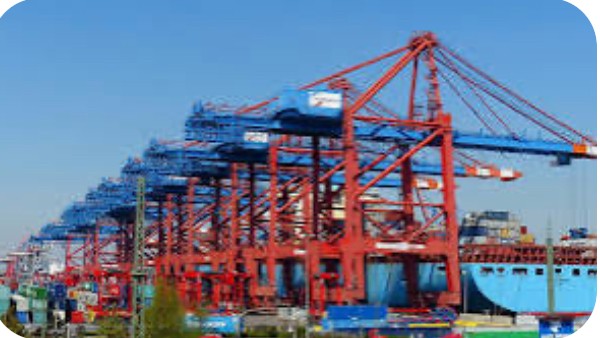Indian Economy's Resilience Amidst Geopolitical Turbulence: A Rare Occurrence
Western economies have been consistently exposed to high levels of uncertainty, with rising interest rates and unemployment rates. The Russia-Ukraine war also resulted in an adverse impact on energy prices, food security, and severe disruption in the global supply chain. The past few years also unraveled the gaping issues in the Chinese economy.
Though Beijing’s excessively slow growth rate took the world by surprise, it was a result of faulty economic policies being pursued for a long time. The rise of ghost buildings, the mounting local government debt crisis leading to excessive burden on local leaders and government employees, and over-investment in infrastructure, all worked together to put a brake on Beijing’s growth and develop in a perilous economic environment.
Looking at the Indian sub-continent, over the last three years, Pakistan has faced its worst environmental and economic crisis. The pandemic, flash floods, and the subsequent rising inflation and economic crisis, which required a massive bail-out from the IMF, took a huge toll on Islamabad, particularly the on the poor and the marginalized. Sri Lanka, at the same time, has been facing an economic crisis due to inefficient taxation and agricultural policies.
However, amid the far less-than-desirable condition of the global economy, marred by excessive instability, we find that the Indian economy has stood as an exception, contrasting against the rest of the world with its robust and resilient economic growth. In FY24, India’s GDP has grown by 8.2% in FY24, overshooting the 8% in three out of four quarters[1]. Moreover, despite the global economic conditions, India is expected to tread forward on its robust growth path, carrying the badge of “the fastest growing economy”.
Multiple factors have contributed to this exceptional performance by New Delhi. Political stability, with peaceful elections and transitions of power at the local and national levels, has stabilized the confidence of businesses in the Indian markets. Moreover, the growth in infrastructure investment by the state, as well as public-private partnerships, have led to its impressive growth; major projects like the Sagarmala and Bharatmala, the Smart Cities Mission, and the India AI Mission are swiftly changing the infrastructure landscape of the economy. Indian growth model has also been an example of how public investment, contrary the popular belief, doesn’t crowd out, rather boosts the growth of private investment.[2]
The Indian stock market, Nifty 50 index, and SENSEX have shown robust growth, deriving benefits from the continued reform process of the government. Manufacturing incentives like the Production-linked incentives (PLIs) scheme is contributing to enhancing India’s secondary sector. The impetus to public investment has played a crucial role in sustaining India’s capital formation, along with growing enthusiastic investment in the private sector. The Indian stock market’s capitalization has surged significantly, making the market Capitalization-to-GDP ratio reaching up to the fifth-largest globally. Net inflows in foreign portfolio investment in FY24 were testimony of India’s strong economic growth and a stable business environment, which has led to enhanced investor confidence.
In the Logistics Performance Index, India improved its ranking from 44th in 2018 to 38th in 2023 out of 139 countries. It has also successively diversified its export destinations, expanding its presence in international markets. Services exports has grown tremendously grew by 4.9% to US$ 341.1 billion in FY24, mostly characterized by export of IT/software services, which India excels at.
India’s growth is not just a unidirectional rise in income, it is rather a multi-dimensional progress, ensuring well-being of the masses. As per Auguste Tano Kouame, World Bank's Country Director in India, “India’s robust growth prospects along with declining inflation will help to reduce extreme poverty.”
Both the supply and demand side of the economy has shown significant progress over the past. On the supply side, the manufacturing sector, growing by 9.9 percent, and the service industry have shown massive growth and promising future prospects. This has also resulted in enhanced welfare, as can be gauged from the decline in the urban unemployment rate since the pandemic, for both male and female workers. On the demand side, the domestic consumer markets have shown resilience, showing characteristics of a robust demand-driven economy.
Despite challenging external conditions, the World Bank has projected a positive medium-term outlook for India. Growth is expected to reach 7 percent in FY24/25 and continue to remain strong in FY25/26 and FY26/27. The robust banking system of India, which follows strict regulations and transparency, has ensured that the economy stays stable despite global twists and turns. India’s robust revenue growth and fiscal consolidation ensures that its debt-to-GDP ratio will decline from 83.9 percent in FY23/24 to 82 percent by FY26/27.
The World Economic Forum has also projected that India is well-positioned to “play a defining role in shaping the future of the global economy in 2024 and beyond.” As the geopolitical conflicts reshape the world economic and political order, India is progressively acquiring an outward looking role. This is well-reflected in its endeavors in the Russia-Ukraine crisis, and extensive help it provided to Sri Lanka during the latter’s economic crisis. The leadership’s recent visits to the USA, Poland, Ukraine, and East Asia are also examples of growing role of India in economic diplomacy in these turbulent times. This indicates that India’s geopolitical significance is growing significantly, and is a model for developing market economies to follow conduct that ensures building of resilient and stable economic institutions.
Recommended
 Economy
Economy
